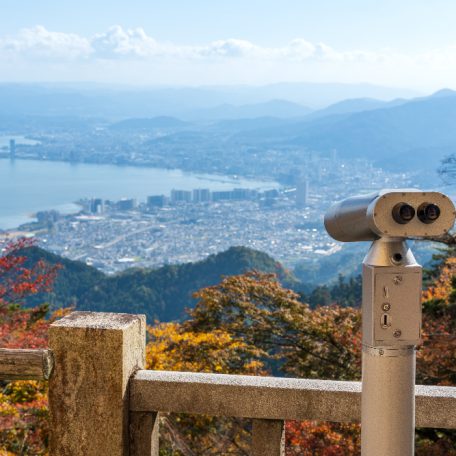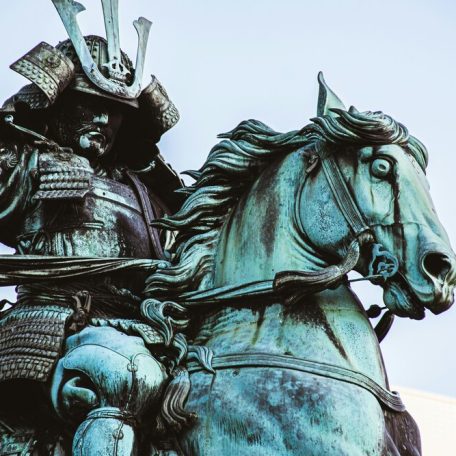SEVEN TIPS FOR ENJOYING A JAPANESE TEA CEREMONY
Jun 16, 2023
BY Jamie Kruse

Congratulations! You’re about to attend your first Japanese tea ceremony. Or, maybe it has simply been a long time since you’ve been to a ceremony, and a few reminders regarding basic tearoom protocol would be useful?
Depending on the context, the ceremony you attend could be an informal demonstration or introductory workshop, or it could be a full-fledged formal tea ceremony. It’s very likely you know which one you are joining before arriving and your host will share appropriate details. At a tea workshop, you will likely receive verbal instructions and explanations each step along the way.
Today we’ll share some basic tips that will help you know what to expect in these various scenarios, while also helping to make things flow more smoothly for the other guests and your host.
To start, it is true there are a lot of protocols involved in the study and practice of formal Japanese tea. It’s important to keep in mind that these methods have been honed over hundreds of years and are primarily intended for formal chado 茶道 (literally, the way of tea) practitioners. Attention to detail, design, order of events, movement and focus of mind all help elevate tea into an aesthetic experience. They also enable the process to unfold smoothly, providing calm, health benefits and respite for everyone involved, while protecting and caring for the utensils being used.
Pretty much everything that structures the tea ceremony has meaning behind it, and often is rooted in Zen buddhism, linking tea to forms of meditation and practices of self-cultivation. Many practitioners feel there is a sense of release and freedom once the gestures become habit, and flow within the body.
As a first time guest, or someone new or curious about Japanese tea, there will not be an expectation that you know, understand, or even notice many of the details that chajin (tea people) study in-depth and perform during tea.
So, if you’re new, or newly returning, to the Japanese tearoom, here are seven major themes to help set your mind at ease and assist you in relaxing into your bowl of tea to experience the remarkable respite that the Japanese tea ceremony can be.

Matcha tea, image Payoon Gerinto
The basics:
1_ CLOTHING:
We highly recommend bringing a pair of clean white socks to wear inside the tearoom. Socks should be relatively new, or new in appearance, if at all possible. Changing into clean socks before entering is a gesture of respect and literally helps protect the tatami mats. It’s also recommended, due to the scratch factor, to not wear denim or jeans inside the tearoom. Avoid all fabrics that might damage the mats and keep in mind that loose/comfortable pants will enable you to sit more comfortably on the floor for extended periods of time. It’s also best to aim for neutrally colored clothing that isn’t overly bright or patterned, so the focus can stay with the tea. If in doubt, go with more conservative cuts and styles, avoiding all tank tops and shorts.
2_ MODERN LIFE ACCESSORIES: WATCHES, JEWELRY AND PHONES:
When participating in a Japanese tea ceremony, you have a unique and rare opportunity to briefly experience a world that isn’t about social or financial status, the mounting problems at work — or the latest news breaking around the world.
For a short time, you are invited to leave all of this outside the tearoom. The door inside, can literally become a threshold. If this sounds inviting, leave your watches and jewelry at home, or at least outside the tearoom. By leaving your watch behind, space and time opens into the moment and an unrushed sense of time. Your host will be keeping tabs on the timing and structure of the event for you, so you can leave clock-bound concerns behind.
Bright and shiny jewelry can also pose as a distraction (and rings can literally chip or scratch delicate tea bowls), so please remove these accessories before entering.
Accessories also include phones. Unless your host has explicitly said they are comfortable with photos, assume documentation is not welcome, so everyone present can relax into directly experiencing the ceremony. If you must bring your phone with you, make sure it’s in airplane mode.

Tea ceremony image Ryutaro Tsukata
3_PERFUMES AND SCENTS:
It’s standard practice to not wear perfume or strong shampoo/scents inside the tea room. This enables everyone present to more fully enjoy the taste and scent of the tea without competition.
4_WHERE TO PUT YOUR LEGS?:
During a formal ceremony, chado practitioners sit in seiza, with legs folded under them as a gesture of respect and hospitality. Today, most hosts understand this style of sitting isn’t possible for many international guests, or even many Japanese, who haven’t had practice. Seiza can be nearly impossible for anyone wearing tight clothing. Follow the lead of your host, if/when they say it’s fine to relax into another type of seated position. Hosts will likely be paying close attention to your level of comfort. If at any time, you need to slide into a new or different position, try to do this as gently and gracefully as possible. In general, the idea isn’t to contort yourself into impossible forms, but express awareness about how your body is arranged in relation to the host and other guests. No one wants you to be suffering or uncomfortable. If there are issues or concerns regarding physical limitations, notify your host in advance, and request a pillow, chair or cushion.

Japanese tearoom, image Ryutaro Tsukata
5_APPRECIATE THE ART AND UNCLUTTERED MIND/ATMOSPHERE:
During the ceremony, there will be designated times to appreciate various objects or elements displayed inside the tearoom. You will be given time to appreciate the tokonoma (an architectural inset displaying flowers and a scroll), the sound of the boiling water, and the design of the seasonal wagashi or tea sweet. All of these elements have been carefully selected for the occasion to make you feel welcome and appreciated — and to be responsive to the season and day. You also might be invited to hold the tea bowls, and appreciate the other utensils, such as water jar, tea caddy or tea scoop. Many of these utensils have long histories, creative names and have been passed among family members, teachers or tea friends. Moments for holding them, asking questions or redirecting attention towards the objects, typically happen at particular times in the ceremony where it makes the most sense to pause. So, in general, wait until your host introduces them before asking questions and in the meantime, enjoy the quiet and the opportunity to clear your mind and appreciate these beautifully crafted and thoughtfully placed objects.

Matcha with two hands, image Motoki Tonn
6_ ALWAYS USE TWO HANDS: EATING AND DRINKING INSIDE THE TEAROOM
Unless you’ve been invited into an elaborate, multi-hour ceremony, you’ll likely be served a whisked matcha called usucha (thin tea). Koicha (thick tea) is usually reserved for more formal occasions and is served in one bowl that is passed among guests, and is much thicker in consistency. With usucha, you will have the entire bowl to yourself, which is typically consumed in 3-4 sips. If you are participating in a workshop or demonstration, you might be invited to try whisking your own matcha. In more standard ceremonies, you will be served tea directly by the host who has prepared the bowl specifically for you.
Regardless of the type of ceremony you join, note that it is important to NOT enjoy your tea sweet (which proceeds the tea) until you are prompted to do so. Eating your tea sweet should happen just before you drink the tea in order to balance the bitter flavor of the tea. If you eat the sweet too early, this preparation will be lost. Also, your host will likely share details about what you should do with the paper, or wooden board, that your tea sweet is served upon. If this information isn’t shared and the sweet is served on paper, it’s best to discreetly fold up the paper and place it in your pocket and take it with you, rather than leave it behind on the tatami mat.
No matter what context you find yourself in, formal, informal, workshop or tea ceremony demonstration, it’s key to try and always hold the tea bowl with two hands. This gesture expresses respect and ensures that fewer bowls will tumble or spill.
In formal ceremonies, there are additional recommendations about where the bowl will be placed, or served to you in relation to the black edging on tatami mats, passing the bowl over either side of them. But, unless you’re explicitly told about this, don’t worry and accept the tea as it passed to you. This also applies for walking/moving within the tea room (it’s typical to not step directly on any of the black edging), but again, unless you’re told directly about this, you don’t need to be concerned about your footing.
Different tea schools handle movement, bowing, folding of napkins and whisking quite differently (froth or no froth, for example). We recommend attending different tea school ceremonies to experience these differences. In general, when you’re ready to drink, guests typically raise their bowl gently in thanks, towards the host, and then rotate the bowl 180 degrees so that the side that was previously pointing away from you (the “front” side of the bowl, usually the most beautiful image/design) is now facing you. Then, relax and enjoy your tea. There is usually enough tea to empty the bowl in 3-4 sips. The final sip can be an audible slurp, in order to signal that the tea was good, and that you are finished.

Japanese garden view, image Yuyu Kitada
7_ RELAX AND ENJOY WHERE YOU ARE RIGHT NOW:
Japanese tea ceremonies are some of the most beautiful and memorable experiences to enjoy while visiting Japan. Tea houses are typically situated near, or inside, temple grounds in beautifully manicured environments with incredible views of mountains and forests.
In all tea ceremonies there is a well-known Japanese phrase that applies to all experiences, but is commonly used to express the heart of tea: Ichi go ichi e 一期一会, literally “one time one meeting”. Meaning, this experience won’t happen again, it’s once in a lifetime. In that spirit, the tea ceremony is a time to enjoy, relax and try not to be overly stressed about the details that you might be forgetting or missing. If you have a thoughtful host, they will flow with whatever happens with grace and you can’t actually go wrong. You are welcome to just experience space and time outside our contemporary rush.
Speaking of time, your host will let you know when the ceremony is officially over. In closing, they might offer a bowl of warm water to guests and do some ceremonial clean-up and general gathering of tea bowls and utensils.
Afterwards, you will hopefully head out into the world— feeling refreshed, renewed and enlivened by the hospitality, incredible tea and experience of time only possible inside the Japanese tearoom!
If your tea ceremony experience feels like it could grow into a deeper interest or practice for you — further learning is readily available in Japan — and around the world! Check out the websites of Omotesenke and Urasenke, or your local Japanese cultural center, as there are many trained teachers around the world. This could be just the beginning of your own lifetime’s exploration of tea!
Omotesenke:
- http://www.omotesenke.jp/english/chanoyu/mokuji.html
- https://www.omotesenke-domonkai-usa-eastern.org/our-story
Urasenke
- https://www.urasenke.or.jp/texte/
- https://urasenke.org/contact/offices.php
- http://www.urasenkenewyork.org
Feature image credit: Ryutaro Tsukata
Book your spot on our Old Town Tokyo tour to enjoy a tea ceremony!
Book your pocket wifi now to stay connected through your entire Japan Journey!

Be sure to get the JR Pass to make navigating Japan during your trip that much easier!

YOU MIGHT ALSO LIKE




